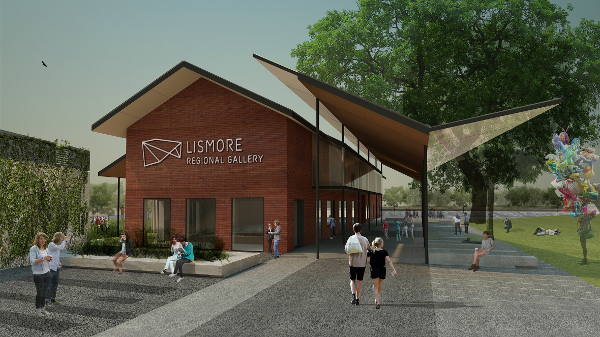Lismore City Council recently submitted an application to the National Stronger Regions Fund to relocate Lismore Regional Gallery, currently in Molesworth Street, to the ‘Lismore Quadrangle’, located on the old Lismore High School site, in the Keen Street block.
The project will include the redevelopment of the existing C-Block building to contain Lismore Regional Gallery, Arts Northern Rivers (currently located in Alstonville) and the Co-op Bookshop (currently located in Woodlark St). The grounds between C-Block, Northern Rivers Conservatorium and the Lismore branch of the Richmond Tweed Regional Library, will be landscaped to connect all these organisations to create the ‘Quadrangle’.
‘Economic Growth’ and ‘Addressing Disadvantage’ were two key criteria addressed in the application.
‘The Arts’ can speak to these very clearly. It’s long been known the economic impact that culture has on cities and towns – just look to Spain’s Bilbao, and in Australia Hobart and Bendigo, and more recently Murwillumbah, home of the superb Tweed Regional Gallery and Margaret Olley Arts Centre, to see the singular effect of cultural infrastructure.
A report commissioned by Lismore Regional Gallery shows that the expansion of the Gallery will bring an economic benefit of over $4 million annually to Lismore through increased visitation.
What is harder to measure, but equally as transformative, is the social impact the arts play in people’s lives. This leads to the second criterion. Lismore Regional Gallery has an established reputation working with a range of community organisations to ensure the arts play a positive role in people’s lives.
Currently the Gallery is working on a number of projects with a range of groups, including Bundjalung and Gumbaynggirr artists, to create new work based on cultural objects; R.E.D Inc, Jarjum Aboriginal Pre‐school, Fromelles Aged Care Facility, and artists from the Deaf community of Lismore are all working on the Hiromi Tango project.
We have also partnered with Youth Connections for young people to learn photographic skills and to be displayed in the Gallery, and a 2014/15 project, working with artists with a Disability, which is currently being reworked for display at Wagga Wagga Art Gallery.
All these projects offer different ways of engagement for a range of groups, building skills, connections, resilience and confidence.
The National Arts and Health Framework, developed by state and territory arts and health ministers, identifies that “arts and health activities have intrinsic, instrumental and institutional values and have a demonstrated range of social, artistic, environmental, cultural, economic and health benefits, including the potential to improve the quality of health care”.
An expanded gallery, with 230% increase in exhibition spaces, and provision of climate control facilities, will mean a greater range of exhibitions are able to be scheduled, with the ability to display works on loan from major institutions. Coupled with dedicated workshop space to better facilitate a range of projects and art making, this means not only an increase in visitor numbers, as evidenced in all gallery expansions, but much stronger creative engagement with all facets of the community.
Brett Adlington is the Director of Lismore Regional Gallery and President, Regional & Public Galleries Association NSW.
















